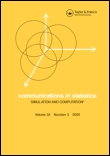
COMMUNICATIONS IN STATISTICS-SIMULATION AND COMPUTATION
Scope & Guideline
Empowering Researchers with Cutting-Edge Statistical Insights
Introduction
Aims and Scopes
- Statistical Methodology Development:
The journal publishes innovative statistical methodologies, including novel estimation techniques, hypothesis testing methods, and models that address complex data structures. - Simulation and Computational Techniques:
A significant focus is on computational statistics, including simulation studies that validate theoretical findings and enhance the practical applicability of statistical methods. - Application of Statistics in Various Fields:
Research articles often demonstrate the application of statistical methods in diverse areas such as finance, healthcare, environmental studies, and social sciences, showcasing the interdisciplinary nature of the journal. - Bayesian and Non-Bayesian Approaches:
The journal includes a balanced representation of Bayesian and frequentist methods, providing a comprehensive view of contemporary statistical practices. - Robustness and Efficiency in Estimation:
Papers frequently explore robust statistical methods that maintain performance in the presence of outliers or model misspecifications, which is vital for real-world applications. - High-Dimensional Data Analysis:
There is a growing emphasis on methodologies suitable for high-dimensional data, reflecting the increasing complexity of data in modern research.
Trending and Emerging
- Machine Learning Integration:
There is a significant increase in research that combines traditional statistical methods with machine learning techniques, reflecting the growing importance of predictive analytics and data-driven decision-making. - Bayesian Methods and Applications:
A rising number of publications focus on Bayesian methods, particularly in complex modeling scenarios, demonstrating a shift towards more flexible statistical frameworks. - High-Dimensional Data Techniques:
Emerging methodologies for analyzing high-dimensional datasets are frequently featured, addressing challenges related to multicollinearity and sparsity that are common in modern data analysis. - Robust Statistical Methods:
An increasing emphasis on robustness in statistical methods highlights the importance of maintaining performance under various conditions, such as outliers and model violations. - Simulation Studies and Computational Statistics:
There is a growing trend towards using simulation studies to validate new methodologies, reflecting a commitment to rigorous computational approaches in statistical research. - Applications in Health and Social Sciences:
The journal is seeing more applications of statistical methods in health and social sciences, particularly in response to contemporary issues like public health, economic modeling, and social behavior analysis.
Declining or Waning
- Traditional Frequentist Methods:
There is a noticeable decrease in the publication of purely frequentist methodologies as more researchers adopt Bayesian approaches, which offer flexibility and adaptiveness in complex data settings. - Basic Statistical Inference Techniques:
The prevalence of simpler statistical inference techniques has diminished, with a shift towards more sophisticated methods that accommodate the complexities of modern datasets. - Single-Method Studies:
The journal has moved away from studies that focus solely on one statistical method, favoring comprehensive approaches that integrate multiple methodologies for robust analysis. - Descriptive Statistics and Basic Data Analysis:
Papers centered on basic descriptive statistics and elementary data analysis techniques have become less common, as the focus shifts to more complex analytical methods.
Similar Journals
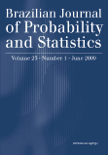
Brazilian Journal of Probability and Statistics
Advancing the Frontiers of Statistical KnowledgeThe Brazilian Journal of Probability and Statistics, published by the Brazilian Statistical Association, stands as a pivotal platform for researchers and practitioners in the realms of probability and statistics. With an ISSN of 0103-0752, this esteemed journal has contributed significantly to the advancement of statistical theory and its applications since its inception. The journal is currently indexed in Scopus, holding a rank of #175 in the Statistics and Probability category and a third quartile (Q3) designation as of 2023, indicating its steady impact within the field. Covering a broad scope of topics, from theoretical advancements to practical applications, it invites submissions that enhance understanding and fosters discussion among academics and professionals alike. The journal is based in São Paulo, Brazil, and operates without open access, ensuring a quality review process that adheres to the highest scholarly standards. Researchers, professionals, and students interested in the latest findings and innovative methodologies in statistics are encouraged to engage with the Brazilian Journal of Probability and Statistics, a vital resource at the intersection of theory and practice.

Thailand Statistician
Elevating the Standards of Statistical MethodologiesThailand Statistician, published by the THAI STATISTICAL ASSOCIATION, is a pivotal journal in the realms of computational mathematics and statistics. With an ISSN of 1685-9057 and an E-ISSN of 2351-0676, this journal aims to disseminate high-quality research and innovative methodologies that advance the fields of statistics and probability. Covering a range of topics from theoretical statistics to applied computational techniques, it provides a platform for researchers, professionals, and students in Thailand and beyond to contribute their findings and insights. The journal has been gaining recognition, boasting a Scopus ranking of Q3 in Computational Mathematics and Q4 in Statistics and Probability as of 2023. With its commitment to open access, the Thailand Statistician stands as an essential resource for those striving to stay abreast of advancements in statistical methodologies and their applications, fostering the growth of statistical science in the region and globally.
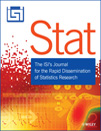
Stat
Unveiling critical insights in statistics and probability.Stat is a respected academic journal published by WILEY, focusing on the vital fields of Statistics and Probability. Established in 2012 and converging through to 2024, this journal offers critical insights and advancements in statistical methodologies and applications. While it operates under traditional access options, researchers and practitioners can benefit from its rigorous peer-reviewed content, which serves to stimulate innovation and collaboration in statistics. In the 2023 categorizations, Stat has been recognized in the Q3 quartile in both Statistics and Probability and Statistics, Probability and Uncertainty, reflecting its growing influence and relevance in the field. Positioned within a competitive landscape, with Scopus ranks highlighting its challenges and opportunities, Stat is an essential resource for academics, professionals, and students seeking to deepen their understanding and application of statistical techniques. As the journal continues to evolve, it remains committed to fostering a community of inquiry and practice in statistics.
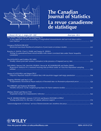
CANADIAN JOURNAL OF STATISTICS-REVUE CANADIENNE DE STATISTIQUE
Where Statistics Meets Empirical ExcellenceCanadian Journal of Statistics - Revue Canadienne de Statistique is a prestigious publication in the field of statistics, managed by Wiley. Since its inception in 1973, this journal has served as an essential resource for researchers, practitioners, and students, offering insights into a diverse range of statistical methodologies and applications. With its impact reflected in its 2023 categorization as Q2 in Statistics and Probability and Q3 in Statistics, Probability and Uncertainty, the journal stands out among its peers, exemplifying rigorous standards in empirical research. The journal's ISSN is 0319-5724 and its E-ISSN is 1708-945X, providing a robust platform for the dissemination of knowledge in the field. While it does not offer open access, the journal remains highly regarded and well-cited, contributing significantly to the advancement of statistical theory and practice. As it continues to publish cutting-edge research through to 2024, the Canadian Journal of Statistics is a must-read for anyone seeking to stay informed on the latest trends and developments in statistics.
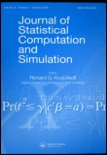
JOURNAL OF STATISTICAL COMPUTATION AND SIMULATION
Pioneering research in statistical computation for a data-driven world.JOURNAL OF STATISTICAL COMPUTATION AND SIMULATION, published by Taylor & Francis Ltd, is a premier journal dedicated to advancing the fields of statistical computation, modeling, and simulation. With a notable impact factor and a ranking in the Q2 quartile across important categories such as Applied Mathematics and Statistics, this journal serves as a vital resource for researchers, practitioners, and students alike. Established in 1972, it has consistently provided cutting-edge research insights, fostering a deeper understanding of statistical methodologies and their practical applications. Although it operates under a subscription model, the journal's commitment to disseminating high-quality research is reflected in its rigorous peer-review process and a broad international readership. With its scope spanning the intersections of statistics, probability, and computational techniques, the journal is essential for anyone looking to stay at the forefront of statistical innovation and practice.

STATISTICAL PAPERS
Unveiling Insights in Statistics and ProbabilitySTATISTICAL PAPERS, published by Springer, is a leading journal in the field of Statistics and Probability that has been contributing to the academic community since 1988. With an impressive track record spanning over three decades, this journal falls within the prestigious Q2 quartile in both the Statistics and Probability and Statistics, Probability and Uncertainty categories, signifying its high-quality research output. It currently ranks #92 out of 278 in the Mathematics - Statistics and Probability category and #61 out of 168 in Decision Sciences - Statistics, Probability and Uncertainty, placing it in the 67th and 63rd percentiles respectively. Although the journal is not open access, it offers a vital platform for researchers, professionals, and students seeking to disseminate their findings and stay abreast of the latest advancements in statistical methods and applications. With its commitment to the highest standards of scholarship, STATISTICAL PAPERS plays a crucial role in shaping contemporary statistical discourse and fostering innovation within the field.

Korean Journal of Applied Statistics
Empowering Researchers with Rigorous Statistical InsightsKorean Journal of Applied Statistics, published by the Korean Statistical Society, is a prominent journal dedicated to advancing the field of applied statistics. ISSN 1225-066X (Print) and E-ISSN 2383-5818 (Online), this journal serves as a vital platform for disseminating high-quality research that addresses the latest methodologies, applications, and innovations in statistical practices. Though currently not an open-access journal, it aims to foster collaboration among statisticians, researchers, and practitioners by providing rigorous peer-reviewed articles that enhance understanding and application of statistical techniques across various disciplines. With a commitment to integrating theory and practice, the Korean Journal of Applied Statistics stands as a crucial resource for those seeking to influence the evolving landscape of statistical research and its applications in Korea and beyond.

TEST
Exploring the frontiers of probability and statistics.TEST, published by Springer, is a prestigious academic journal that serves as a vital platform for research in the fields of Statistics and Probability. With an ISSN of 1133-0686 and an E-ISSN of 1863-8260, TEST has been at the forefront of statistical methodology and applications since its inception in 1992. As of 2023, the journal holds a Q2 ranking in both the Statistics and Probability, and Statistics, Probability and Uncertainty categories, affirming its position among the leading scholarly publications in these domains. Although it currently does not offer open access, its rich repository of peer-reviewed articles and innovative research findings continues to attract attention from researchers, professionals, and students alike. Positioned within the competitive landscape of mathematical sciences, TEST aims to advance both theoretical developments and practical applications in statistical science through high-quality publications. Researchers can greatly benefit from the insights and methodologies presented within its pages, as elucidated by its Scopus rankings, placing it in the 56th percentile for Mathematics in Statistics and Probability and 53rd for Decision Sciences. For further inquiries, TEST is headquartered at One New York Plaza, Suite 4600, New York, NY 10004, United States, where it continually strives to contribute to the evolution of statistical research.
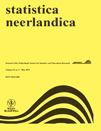
STATISTICA NEERLANDICA
Advancing statistical science through rigorous scholarship.STATISTICA NEERLANDICA is a prestigious peer-reviewed journal published by Wiley, focusing on the fields of statistics and probability. Established in 1946 and addressing key issues in statistical theory and its applications, the journal has significantly contributed to the development of modern statistical practices. With an impressive Q2 categorization in both Statistics and Probability, as well as Statistics, Probability, and Uncertainty, STATISTICA NEERLANDICA stands out within its field, ranking in the 62nd percentile among its peers in mathematics, specifically in statistics and probability. Researchers, professionals, and students can benefit from its rigorous scholarship and innovative methodologies, aiding in the advancement of statistical science. Although the journal does not operate under an open access model, it maintains a commitment to disseminating high-quality research, making it a vital resource for those engaged in statistical inquiry.
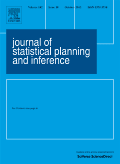
Journal of Statistical Planning and Inference
Fostering Innovation in Statistical Planning and InferenceThe Journal of Statistical Planning and Inference, published by ELSEVIER, stands as a significant platform within the fields of applied mathematics and statistics. With a history of rigorous scholarship since its inception in 1977, this journal provides a vital forum for researchers to share their advancements in statistical methodologies, planning, and inference techniques. As of 2023, it holds a respectable impact factor reflected in its Q2 rankings across multiple categories, including Applied Mathematics and Statistics and Probability, showcasing its influence and relevance in academic discourse. The journal is indexed in Scopus, with commendable rankings that affirm its scholarly merit, making it vital for professionals and students seeking the latest developments and research trends in statistical sciences. With a commitment to high-quality publications aimed at fostering innovation and practical solutions in statistical applications, the Journal of Statistical Planning and Inference is essential for anyone involved in empirical research and data-driven decision-making.